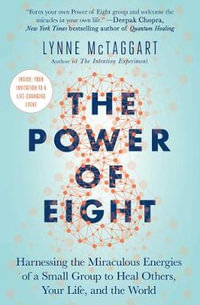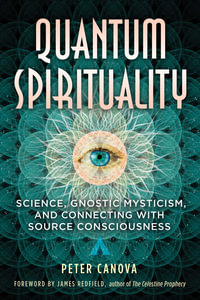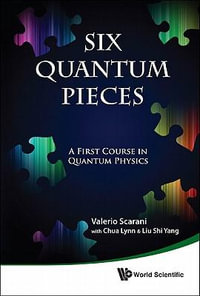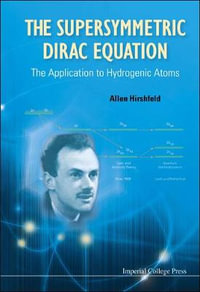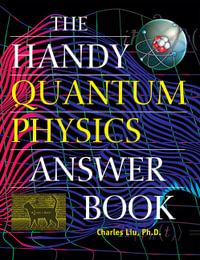| The Path Ahead | p. 1 |
| Definition and Fundamentals | p. 1 |
| Definition of Consciousness and the Classical Approach | p. 2 |
| Quantum Theories | p. 4 |
| Quantum Processing by Microtubules and Neurocognition | p. 8 |
| Overview of the Contributions | p. 11 |
| New and Notable Developments | p. 17 |
| An Electromagnetic Fingerprint of Transport Along Microtubules | p. 17 |
| Extrapolations to Mesoscopic and Macroscopic Levels | p. 22 |
| Conclusions | p. 23 |
| References | p. 24 |
| Consciousness and Quantum Physics: Empirical Research on the Subjective Reduction of the Statevector | p. 27 |
| Introduction | p. 27 |
| The Measurement Problem | p. 27 |
| Objective Reduction and Consciousness | p. 29 |
| Previous Empirical Work on Subjective Reduction | p. 30 |
| Current Investigation | p. 33 |
| Experimental Design | p. 33 |
| Experimental Procedure | p. 36 |
| Subjects | p. 36 |
| Physiological Measurement | p. 36 |
| Further Procedure | p. 36 |
| Data Analysis | p. 37 |
| Results | p. 38 |
| Conclusions | p. 40 |
| Further Research | p. 45 |
| Appendix | p. 47 |
| References | p. 47 |
| Microtubules in the Cerebral Cortex: Role in Memory and Consciousness | p. 49 |
| Introduction | p. 49 |
| General Features of the Brain | p. 49 |
| Neuronal Assemblies: Patterns of Connection | p. 51 |
| Neurons, Synapses and Neurotransmitter Molecules | p. 52 |
| Functions of Microtubules and MAPs | p. 56 |
| Transport along Microtubules | p. 57 |
| Signal Transduction and Anchoring of Signal-Transduction Molecules | p. 57 |
| Learning and Memory: Neuroplasticity vs. Stability | p. 65 |
| Synaptic Change: Hebb's Rule Revisited | p. 66 |
| Microtubules and MAPs in Dendrites Play a Critical Role in Memory | p. 70 |
| Microtubules Influence Synaptic Efficacy | p. 77 |
| Consciousness | p. 77 |
| Attention: The Spotlight of Consciousness | p. 78 |
| Waking, Sleeping and Dreaming: Different Levels of Consciousness | p. 80 |
| Mental Force to Think and Act | p. 81 |
| Consciousness, Memory and Microtubules | p. 83 |
| Microtubules and Quantum Entanglement: A Possible Basis for Memory and Consciousness | p. 85 |
| Conclusion | p. 89 |
| References | p. 90 |
| Towards Experimental Tests of Quantum Effects in Cytoskeletal Proteins | p. 95 |
| Introduction | p. 96 |
| Overview | p. 96 |
| Tubulin and Microtubules | p. 97 |
| Motivation | p. 101 |
| QED Model of Tubulin and its Implications | p. 102 |
| Introduction | p. 102 |
| Quantum Coherence in Biological Matter? | p. 105 |
| Implications for Cell Function | p. 115 |
| Conclusions | p. 120 |
| Tau Accumulation in Drosophila Mushroom Body Neurons Results in Memory Impairment | p. 120 |
| Introduction | p. 120 |
| Drosophila | p. 121 |
| Genetic Engineering | p. 123 |
| Conditioning | p. 126 |
| Controls | p. 128 |
| Results | p. 132 |
| Conclusions | p. 134 |
| Discussion | p. 134 |
| Refractometry, Surface Plasmon Resonance, and Dielectric Spectroscopy of Tubulin and Microtubules | p. 136 |
| Theory of Dielectrics | p. 136 |
| Optics | p. 141 |
| Surface Plasmon Resonance (SPR) | p. 145 |
| Dielectric Spectroscopy | p. 153 |
| Emerging Directions of Experimental Tests of the Quantum Consciousness Idea | p. 159 |
| Entanglement | p. 159 |
| Molecular Electronics | p. 160 |
| Proposed Further Research | p. 160 |
| Unification of Concepts and Conclusions | p. 163 |
| Putting It All Together | p. 163 |
| Conclusions | p. 164 |
| References | p. 165 |
| Physicalism, Chaos and Reductionism | p. 171 |
| Introduction | p. 171 |
| Quantum and Classical Dynamics | p. 172 |
| What Are Classical Nonlinear Phenomena? | p. 173 |
| The Biological and Cognitive Hierarchies | p. 174 |
| Reductionism | p. 177 |
| Objections to Reductionism | p. 179 |
| Constructionism versus Reductionism | p. 179 |
| Immense Numbers of Possibilities | p. 180 |
| Sensitive Dependence on Initial Conditions | p. 181 |
| The Nature of Causality | p. 181 |
| Nonlinear Causality | p. 183 |
| The Nature of Time | p. 184 |
| Downward Causation | p. 184 |
| Open Systems | p. 185 |
| Closed Causal Loops | p. 186 |
| Concluding Comments | p. 188 |
| References | p. 190 |
| Consciousness, Neurobiology and Quantum Mechanics: The Case for a Connection | p. 193 |
| Introduction: The Problems of Consciousness | p. 193 |
| Time and Consciousness | p. 197 |
| Is Consciousness Continuous or a Sequence of Discrete Events? | p. 197 |
| The Timing of Conscious Experience | p. 198 |
| Taking Backward Time Referral Seriously | p. 202 |
| The Neural Correlate of Consciousness | p. 206 |
| Functional Organization of the Brain | p. 206 |
| Cerebral Cortex and Neuronal Assemblies | p. 208 |
| Axons and Dendrites | p. 208 |
| Neural Synchrony | p. 212 |
| Gap-Junction Assemblies - "Hyperneurons" | p. 215 |
| The Next NCC Frontier - Neuronal Interiors and the Cytoskeleton | p. 216 |
| The Neuronal Cytoskeleton | p. 217 |
| Microtubules and Networks inside Neurons | p. 217 |
| Microtubule Automata | p. 220 |
| Protein Conformational Dynamics - Nature's Bits and Qubits | p. 224 |
| Anesthesia | p. 225 |
| Quantum Information Processing | p. 226 |
| Quantum Mechanics | p. 226 |
| Quantum Computation | p. 228 |
| Quantum Computing with Penrose OR | p. 229 |
| The Quantum Unconscious | p. 230 |
| Quantum Computation in Microtubules - The Orch OR Model | p. 232 |
| Specifics of Orch OR | p. 232 |
| Decoherence | p. 235 |
| Testability and Falsifiability | p. 236 |
| Applications of Orch OR to Consciousness and Cognition | p. 236 |
| Visual Consciousness | p. 236 |
| Volition and Free-Will | p. 238 |
| Quantum Associative Memory | p. 239 |
| The Hard Problem of Conscious Experience | p. 239 |
| What is Consciousness? | p. 240 |
| Consciousness and Evolution | p. 241 |
| Conclusion | p. 242 |
| Appendix | p. 242 |
| References | p. 244 |
| Life, Catalysis and Excitable Media: A Dynamic Systems Approach to Metabolism and Cognition | p. 255 |
| Life and Robustness | p. 255 |
| Life and Catalysis | p. 260 |
| Catalysis, Traveling Waves and Excitable Media | p. 271 |
| The Brain as an Excitable Medium | p. 274 |
| Conclusion | p. 288 |
| References | p. 289 |
| The Dendritic Cytoskeleton as a Computational Device: An Hypothesis | p. 293 |
| Introduction | p. 293 |
| Neurobiological Introduction | p. 293 |
| Neuro computational Introduction | p. 297 |
| Dendritic Channel Function | p. 299 |
| Actin-Microtubule Cytoskeletal Connections | p. 299 |
| C-Termini in Microtubules | p. 301 |
| Potential Configurations of Microtubular C-Termini | p. 303 |
| Dynamic Model of the C-Termini | p. 305 |
| Ionic Wave Propagation along MAP2 | p. 306 |
| Ion Waves along Actin Filaments | p. 308 |
| Ionic Condensation along the Actin Filament | p. 308 |
| Electrical Modeling of Actin | p. 309 |
| Implications of Actin Filament's Electrical Activity | p. 312 |
| Dendritic Cytoskeleton Computation - Vision of Integration | p. 313 |
| MTN Control of Synaptic Plasticity, Modulation, and Integration | p. 318 |
| Final Statement | p. 320 |
| References | p. 320 |
| Recurrent Quantum Neural Network and its Applications | p. 327 |
| Intelligence - Still Ill-Understood | p. 327 |
| Intelligent Filtering - Denoising of Complex Signals | p. 328 |
| RQNN Architecture used for Stochastic-Filtering | p. 329 |
| Integration of the Schrodinger Wave Equation | p. 331 |
| Simulation Results I | p. 333 |
| A Comprehensive Quantum Model of Intelligent Behavior | p. 337 |
| RQNN-based Eye-Tracking Model | p. 338 |
| A Theoretical Quantum Brain Model | p. 338 |
| An Eye-Tracking Model using RQNN with Nonlinear Modulation of Potential Field | p. 339 |
| Simulation Results II | p. 342 |
| Concluding Remarks | p. 347 |
| References | p. 348 |
| Microtubules as a Quantum Hopfield Network | p. 351 |
| Introduction | p. 351 |
| Microtubulin Model | p. 352 |
| Hopfield Model | p. 354 |
| Quantum Model | p. 355 |
| Quantum Hopfield Network | p. 358 |
| QHN as Information Propagator for a Microtubules Architecture | p. 360 |
| Conclusions and Future Work | p. 367 |
| References | p. 369 |
| Consciousness and Quantum Brain Dynamics | p. 371 |
| Deconstruction | p. 371 |
| Quantum Brain Dynamics | p. 373 |
| Hermitean Dual-Mode Quantum Brain Dynamics | p. 375 |
| Non-Hermitean Dual-Mode Quantum Brain Dynamics | p. 376 |
| Application to Mathematics: The Riemann Hypothesis | p. 377 |
| Monadological Implications of Non-Hermitean Dual-Mode QBD | p. 381 |
| Comment | p. 383 |
| References | p. 384 |
| The CEMI Field Theory: Seven Clues to the Nature of Consciousness | p. 387 |
| Why Do we Need a Theory of Consciousness? | p. 387 |
| Field Theories of Consciousness | p. 393 |
| The Brain's Electromagnetic Field | p. 394 |
| The Influence of the Brain's Electromagnetic Field on Neural Firing | p. 395 |
| The CEMI Field Theory | p. 396 |
| Why don't External Fields Influence our Minds? | p. 397 |
| Does the CEMI Field Theory Account for the Seven Clues to the Nature of Consciousness? | p. 398 |
| A Last Word, Concerning Quantum Theories of Consciousness | p. 401 |
| Conclusions and the Way Forward | p. 404 |
| References | p. 404 |
| Quantum Cosmology and the Hard Problem of the Conscious Brain | p. 407 |
| Subject-Object Complementarity and the Hard Problem | p. 407 |
| Wave-Particle Complementarity, Uncertainty and Quantum Prediction | p. 410 |
| Two-Timing Nature of Special Relativity | p. 415 |
| Reality and Virtuality: Quantum Fields and Seething Uncertainty | p. 416 |
| The Spooky Nature of Quantum Entanglement | p. 417 |
| Quantum Match-Making: Transactional Supercausality and Reality | p. 420 |
| Exploring the "Three Pound Universe" | p. 423 |
| Chaos and Fractal Dynamics as a Source of Sensitivity, Unpredictability and Uncertainty | p. 428 |
| Classical and Quantum Computation, Anticipation and Survival | p. 430 |
| The Cosmic Primality of Membrane Excitation | p. 433 |
| Chaotic Excitability and Quantum Sensitivity as a Founding Eucaryote Characteristic | p. 437 |
| Models of the Global-Molecular-Quantum Interface | p. 440 |
| Quantum Mind and Transactional Supercausality | p. 442 |
| Complementarity and the Sexuality of Quantum Entanglement | p. 448 |
| The Hard Problem: Subjective Experience, Intentional Will and Quantum Mind Theories | p. 449 |
| Consciousness and Neurocosmology | p. 451 |
| References | p. 454 |
| Consciousness and Logic in a Quantum Computing Universe | p. 457 |
| Introduction | p. 458 |
| The "Big Wow" | p. 459 |
| How the "Big Wow" Drove Human Minds | p. 461 |
| Entanglement with the Environment | p. 463 |
| Holography and Cellular Automata | p. 463 |
| Consciousness and Tubulins/Qubits | p. 464 |
| Consciousness Arises in the "Bits Era" | p. 465 |
| The Boolean Observer | p. 465 |
| The Analogy | p. 466 |
| The Double Logic of the Observer Inside a Quantum Universe | p. 467 |
| IT from Qubit: The Whole Universe as a Quantum Computer | p. 468 |
| Quantum Minds and Black - Hole Quantum Computers in a Quantum Game | p. 469 |
| Qualia and Quantum Space-Time | p. 470 |
| Mathematical Intuition and the Logic of the Internal Observer | p. 473 |
| The Self | p. 475 |
| The Self and the Mirror Measurement | p. 475 |
| Nonself | p. 476 |
| The Universal Self: The Universe and the Mirror | p. 476 |
| The Universal Self: The Mathematical Truth | p. 477 |
| Conclusion | p. 477 |
| References | p. 479 |
| Index | p. 483 |
| Table of Contents provided by Ingram. All Rights Reserved. |





